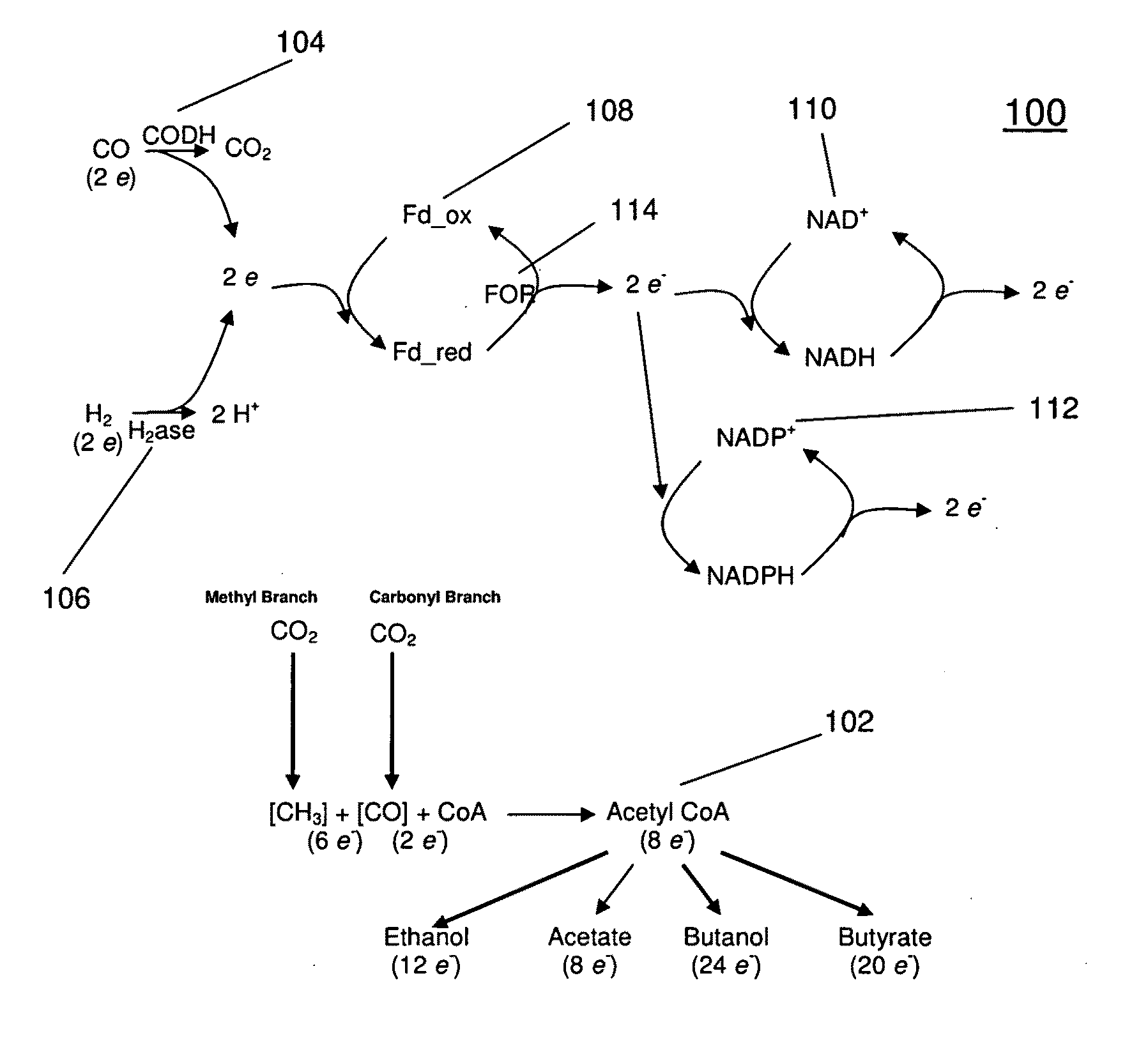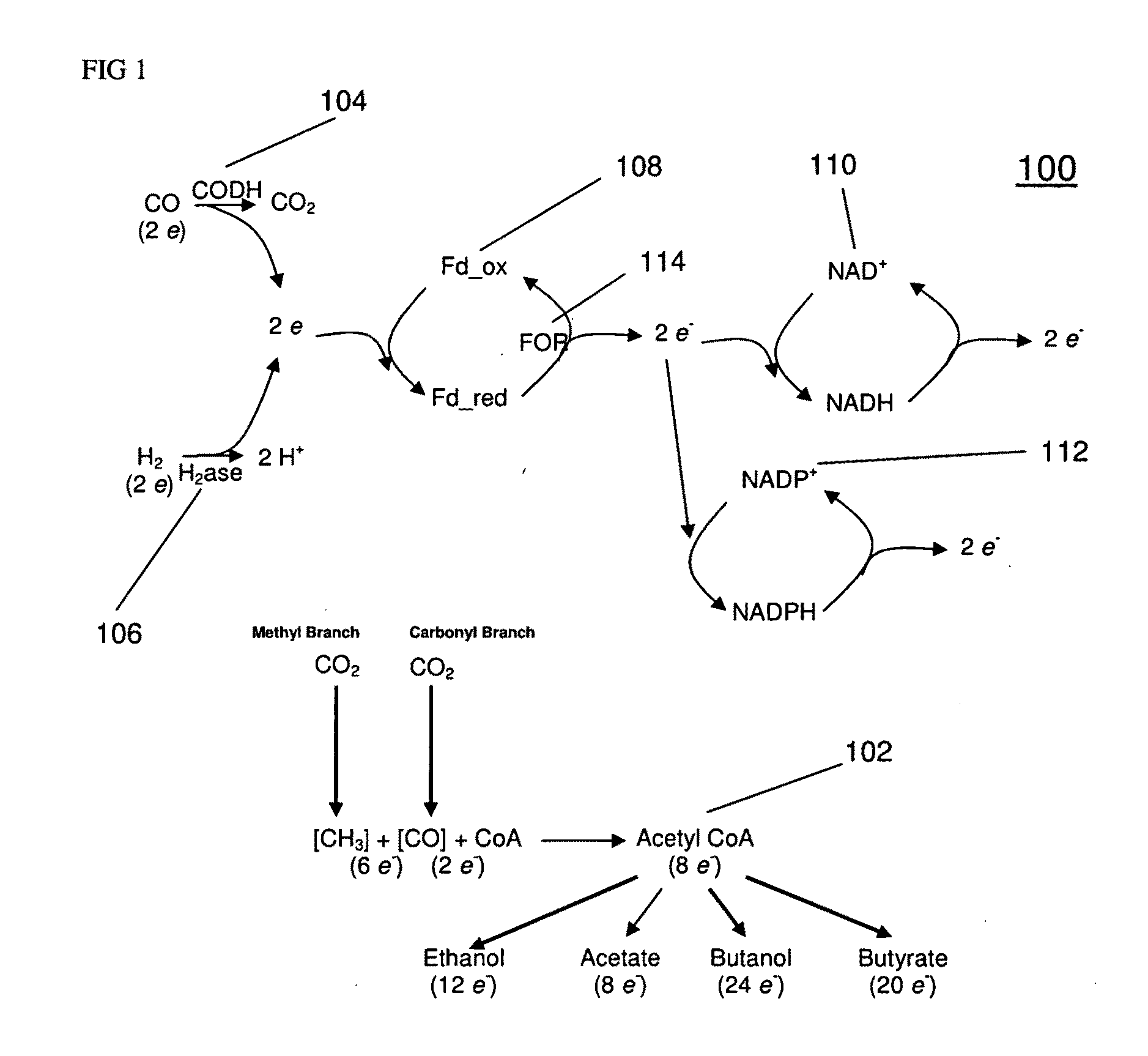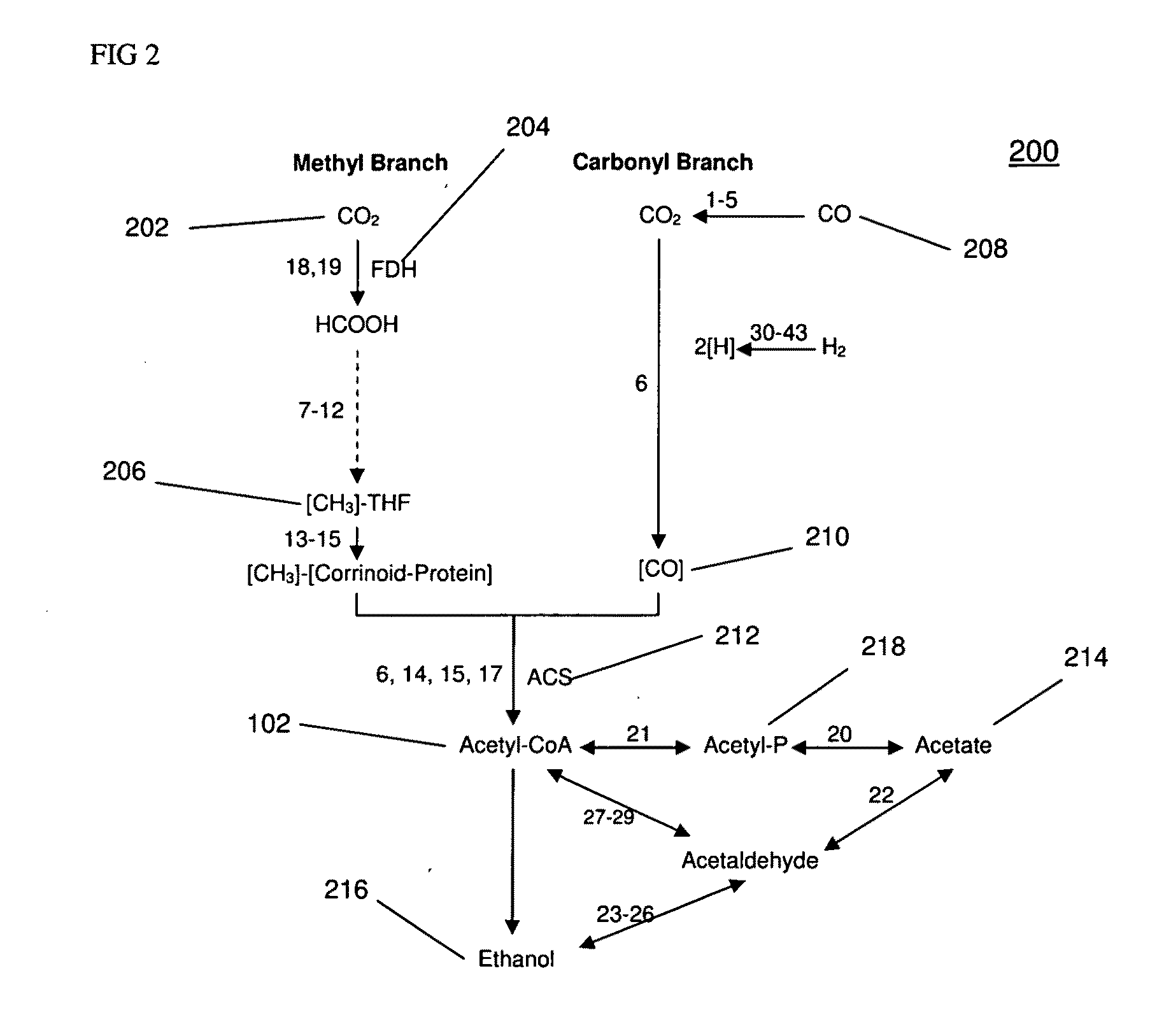Essential genes encoding conserved metabolic pathway function in autotrophic solventogenic clostridial species
- Summary
- Abstract
- Description
- Claims
- Application Information
AI Technical Summary
Benefits of technology
Problems solved by technology
Method used
Image
Examples
Embodiment Construction
[0018]The present invention is directed to novel genetic sequences coding for acetogenic Clostridial microorganisms that produce ethanol and acids from syngas comprising CO, CO2, H2, or mixtures thereof, and functional characterizations thereof.
[0019]Specifically, the present invention is directed to a minimum set of metabolic pathway genes of biocatalysts involved in conversion of syngas to ethanol under autotrophic growth conditions. Further, the present invention is directed to a process for prescreening autotrophic homoacetogenic microorganisms for the ability to produce high ethanol titers from syngas components.
[0020]Several species of acetogenic Clostridia that produce C2-C6 alcohols and acids via the Wood-Ljungdahl pathway have been characterized: C. ragsdahlei, C. ljungdahlii, C. carboxydivorans, and C. autoethanogenum. The genomes of four of these micro-organisms were sequenced in order to locate and characterize the portions of the genome that code for the functions of in...
PUM
| Property | Measurement | Unit |
|---|---|---|
| Fraction | aaaaa | aaaaa |
| Fraction | aaaaa | aaaaa |
| Size | aaaaa | aaaaa |
Abstract
Description
Claims
Application Information
 Login to View More
Login to View More - R&D
- Intellectual Property
- Life Sciences
- Materials
- Tech Scout
- Unparalleled Data Quality
- Higher Quality Content
- 60% Fewer Hallucinations
Browse by: Latest US Patents, China's latest patents, Technical Efficacy Thesaurus, Application Domain, Technology Topic, Popular Technical Reports.
© 2025 PatSnap. All rights reserved.Legal|Privacy policy|Modern Slavery Act Transparency Statement|Sitemap|About US| Contact US: help@patsnap.com



